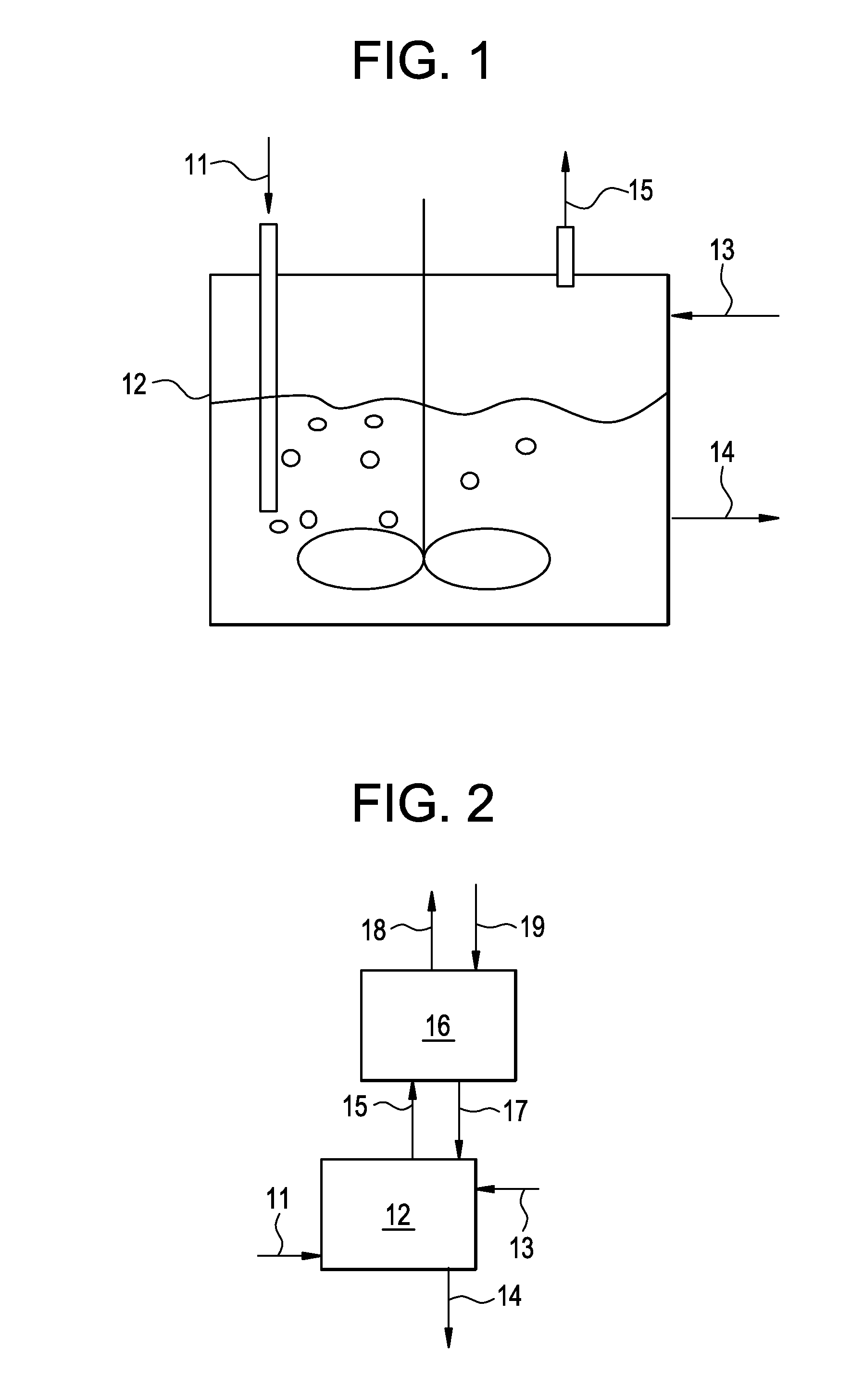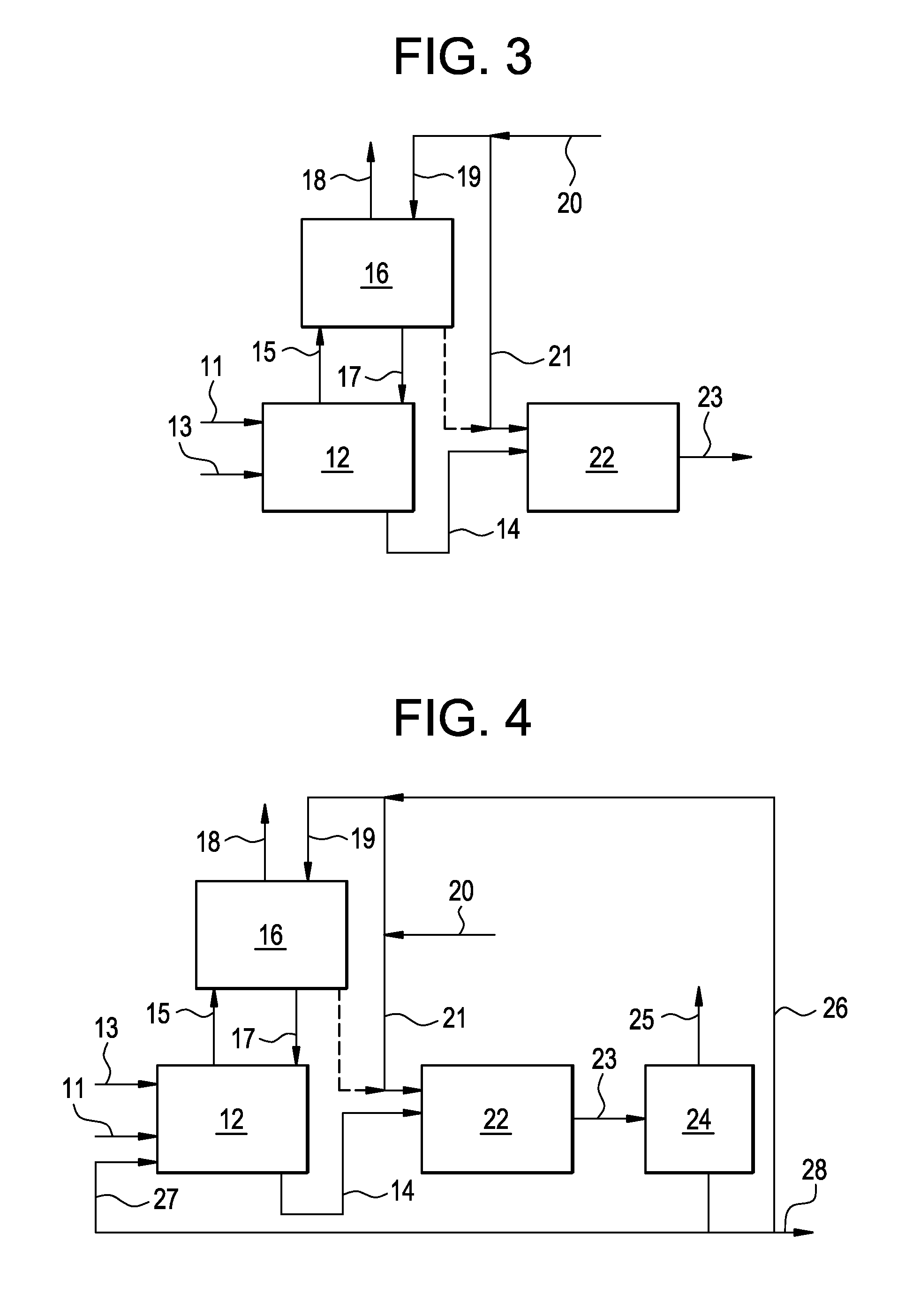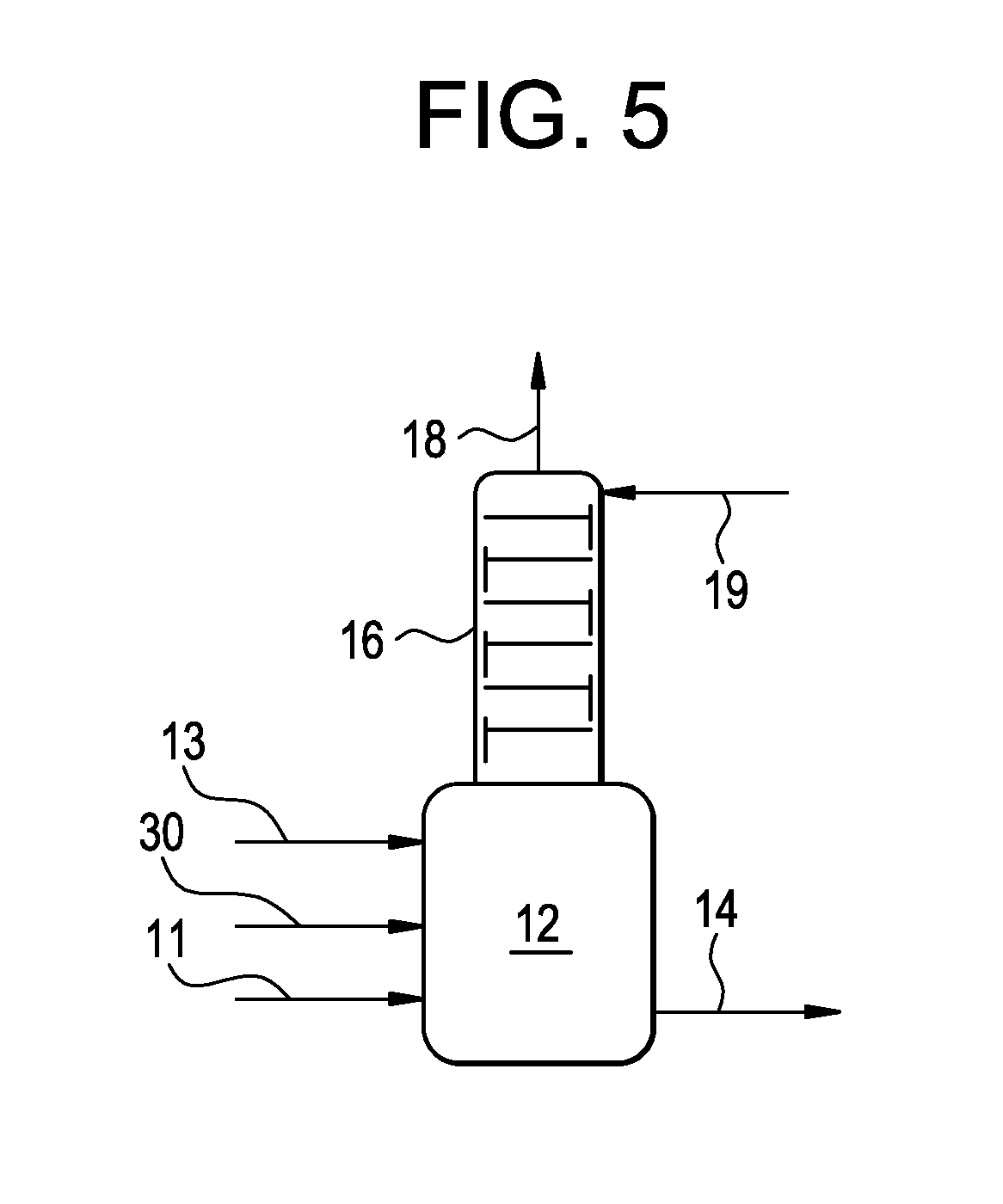Process and apparatus for vapor phase purification during hydrochlorination of multi-hydroxylated aliphatic hydrocarbon compounds
a technology of aliphatic hydrocarbons and purification methods, which is applied in the direction of sustainable manufacturing/processing, azeotropic distillation, separation processes, etc., can solve the problems of increasing the loss of hcl in the tailgas and not addressing the increase in hcl in the reaction mixtur
- Summary
- Abstract
- Description
- Claims
- Application Information
AI Technical Summary
Problems solved by technology
Method used
Image
Examples
example 1
[0130]This example illustrates a process conducted according to the present invention shown in FIG. 2. This example was produced by simulating the present invention using commercially available software and proprietary physical properties, thermodynamics and kinetic models of the major components.
[0131]The reactor (12) was simulated as CSTR reactor at 15 bar pressure and 105° C. temperature. The absorber (16) was simulated as falling film absorber operating at 100° C. temperature and 11 bar pressure. The results of the simulation are presented below in Table 1.
TABLE 1Stream11131415171819Mass Flow kg / hr4093170015133927521886588717000Mass FractionINERTS0.0540.1000.0880.0910.8170.100HCl0.9450.0000.0900.7100.0950.1820.000Other Mixed0.0000.0000.8990.0200.0030.0000.000ChlorohydrinesABSORBENT0.0000.9000.0100.0000.8110.0000.900
example 2
[0132]This example illustrates a process conducted according to the present invention as shown in FIG. 3. This example was produced by simulating the present invention using commercially available software and proprietary physical properties, thermodynamics and kinetic models of the major components.
[0133]The reactor (12) was simulated as CSTR reactor at 15 bar pressure and 110° C. temperature. The absorber (16) was simulated as absorber operating at 8.5 bar pressure having 3 theoretical stages. The reactor (22) was simulated as an adiabatic plug flow reactor operating at 10 bar pressure. The results of the simulation are presented below in Table 2.
TABLE 2Stream11131415171819202123Total Flow kg / hr4094936151327623107271115935017001765069704Mass FractionINERTS0.05500.00000.08830.36250.08790.80320.10000.10000.10000.1099HCl0.94500.00010.08990.61340.12200.19680.00000.00000.00000.0459Other Mixed0.00000.78190.90040.02940.09340.00540.10000.10000.10000.8362ChlorohydrinsABSORBENT0.00000.21800...
example 3
[0134]This example illustrates a process conducted according to the present invention as shown in FIG. 4. This example was produced by simulating the invention using commercially available software and proprietary physical properties, thermodynamics and kinetic models of the major components.
[0135]The reactor (12) was simulated as CSTR reactor at 9 bar pressure and 105° C. temperature. The absorber (16) was simulated as absorber operating at 8.5 bar pressure having 3 theoretical stages. The reactor (22) was simulated as an adiabatic plug flow reactor operating at 10 bar pressure. The separation device (24) was simulated as a distillation column operating at pressure 0.07 bar, having 15 theoretical stages with the feed at stage 9. The distillate to reflux ratio was set as 15:1. The boil up ratio in the column was set as 1.55. The results of the simulation are presented below in Table 3.
TABLE 3Stream1113141517Total Flow kg / hr394311295549981375045165Mass FractionINERTS0.05500.00100.088...
PUM
| Property | Measurement | Unit |
|---|---|---|
| Fraction | aaaaa | aaaaa |
| Fraction | aaaaa | aaaaa |
| Time | aaaaa | aaaaa |
Abstract
Description
Claims
Application Information
 Login to View More
Login to View More - R&D
- Intellectual Property
- Life Sciences
- Materials
- Tech Scout
- Unparalleled Data Quality
- Higher Quality Content
- 60% Fewer Hallucinations
Browse by: Latest US Patents, China's latest patents, Technical Efficacy Thesaurus, Application Domain, Technology Topic, Popular Technical Reports.
© 2025 PatSnap. All rights reserved.Legal|Privacy policy|Modern Slavery Act Transparency Statement|Sitemap|About US| Contact US: help@patsnap.com



